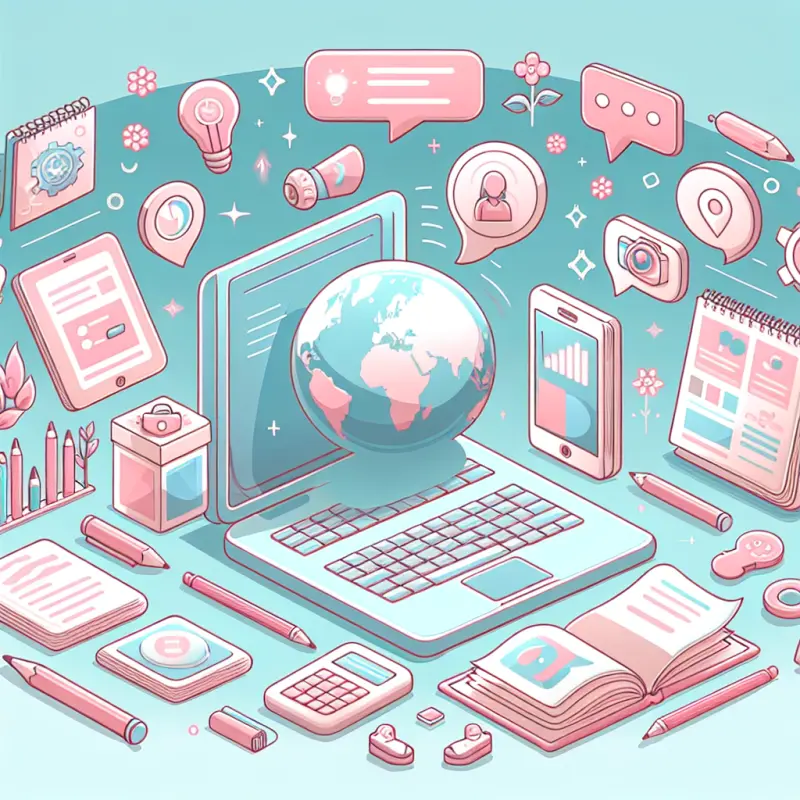Social Media and Menstrual Health Education: Opportunities and Risks

Social Media and Menstrual Health Education: Opportunities and Risks
Introduction
In the past decade, social media has become an integral part of daily life, revolutionizing how individuals communicate, learn, and share information. Platforms like Facebook, Instagram, Twitter, and TikTok have transcended their initial purpose of connecting friends and family, evolving into powerful tools for education and advocacy on various topics, including health. One area where social media is making a significant impact is menstrual health education. This article explores the opportunities and risks associated with using social media as a platform for menstrual health education, highlighting its potential to break taboos and empower individuals, as well as the challenges it presents in terms of misinformation and privacy concerns.
The Role of Social Media in Menstrual Health Education
Breaking Taboos and Stigma
- Historical Context: Menstrual health has long been shrouded in stigma and silence. Cultural taboos have perpetuated myths and misinformation, leading to widespread ignorance and shame.
- Open Conversations: Social media provides a platform for open conversations about menstruation, challenging societal norms and encouraging acceptance. Influencers, activists, and everyday users share their experiences, fostering a sense of community and normalizing menstruation.
- Hashtags and Campaigns: Campaigns like #PeriodPositive, #MenstruationMatters, and #EndPeriodPoverty have gained traction, raising awareness and promoting menstrual equity worldwide.
Access to Information
- Educational Content: Social media offers a wealth of educational content on menstrual health, from infographics and videos to articles and webinars. Users can easily access information on menstrual cycles, hygiene, products, and health issues.
- Diverse Perspectives: Platforms allow for the sharing of diverse perspectives and experiences, catering to different cultural, social, and economic contexts. This inclusivity helps create a more comprehensive understanding of menstrual health.
- Expert Engagement: Health professionals and organizations use social media to disseminate accurate information and engage with users, providing expert advice and answering questions in real-time.
Empowerment and Advocacy
- Self-Efficacy: By providing knowledge and breaking down barriers, social media empowers individuals to take control of their menstrual health and make informed decisions.
- Advocacy and Activism: Social media is a powerful tool for advocacy, enabling users to mobilize support, influence policy, and drive social change. Movements advocating for free menstrual products in schools and workplaces have gained momentum through online platforms.
Risks and Challenges of Social Media in Menstrual Health Education
Misinformation and Myths
- Spread of False Information: The open nature of social media allows anyone to share information, which can lead to the spread of myths and misinformation. Unverified claims about menstrual health can be harmful and misleading.
- Echo Chambers: Algorithms that tailor content to user preferences can create echo chambers, reinforcing existing beliefs and limiting exposure to diverse viewpoints.
Privacy and Data Concerns
- Data Privacy: Sharing personal menstrual health information on social media can raise privacy concerns. Users may inadvertently disclose sensitive data, which can be exploited for commercial purposes.
- Targeted Advertising: Companies use data analytics to target users with menstrual health-related advertisements, raising ethical questions about data usage and consumer manipulation.
Cultural Sensitivity and Inclusivity
- Cultural Variations: Menstrual health experiences vary greatly across cultures. Content that is not culturally sensitive can alienate certain groups and perpetuate stereotypes.
- Inclusivity: Discussions about menstrual health must be inclusive of all genders, recognizing that transgender and non-binary individuals also menstruate. Social media content that excludes these perspectives can be harmful.
Best Practices for Using Social Media in Menstrual Health Education
Ensuring Accuracy and Credibility
- Source Verification: Encourage users to verify the credibility of sources before sharing information. Following health organizations and professionals can help ensure the dissemination of accurate content.
- Fact-Checking: Platforms can implement fact-checking mechanisms to flag false information and promote verified content.
Promoting Privacy and Ethical Use
- Privacy Settings: Users should be informed about privacy settings and encouraged to use them to protect their data.
- Ethical Advertising: Companies should adopt ethical advertising practices, ensuring transparency in how data is used and offering users control over their information.
Enhancing Cultural Sensitivity and Inclusivity
- Diverse Representation: Content creators should strive for diverse representation, considering cultural, social, and gender differences in their material.
- Inclusive Language: Using inclusive language that acknowledges all individuals who menstruate can help create a more welcoming and supportive environment.
Case Studies and Examples
Successful Campaigns
- #FreePeriods Movement: This campaign, led by activist Amika George, used social media to raise awareness about period poverty and advocate for free menstrual products in UK schools, ultimately influencing government policy.
- Menstrupedia: An online platform that uses comics and educational content to teach young people about menstrual health, Menstrupedia has effectively utilized social media to reach a global audience and break taboos.
Lessons Learned
- Community Engagement: Successful campaigns often involve active community engagement, leveraging user-generated content and encouraging participation.
- Partnerships: Collaborations with health organizations, influencers, and educators can enhance the reach and impact of menstrual health education efforts on social media.
Conclusion
Social media presents both significant opportunities and risks in the realm of menstrual health education. It has the potential to break down taboos, provide access to diverse information, and empower individuals to advocate for change. However, challenges such as misinformation, privacy concerns, and cultural insensitivity must be addressed to maximize the benefits of social media as an educational tool. By adopting best practices and learning from successful initiatives, social media can be harnessed to promote menstrual health education in a way that is accurate, inclusive, and empowering for all.
In conclusion, while social media is not a panacea for all the challenges associated with menstrual health education, it is undoubtedly a powerful platform that, when used responsibly, can contribute to a more informed and equitable society. As users, educators, and advocates, we must continue to navigate its complexities, ensuring that the opportunities it presents are realized while mitigating the risks it poses.